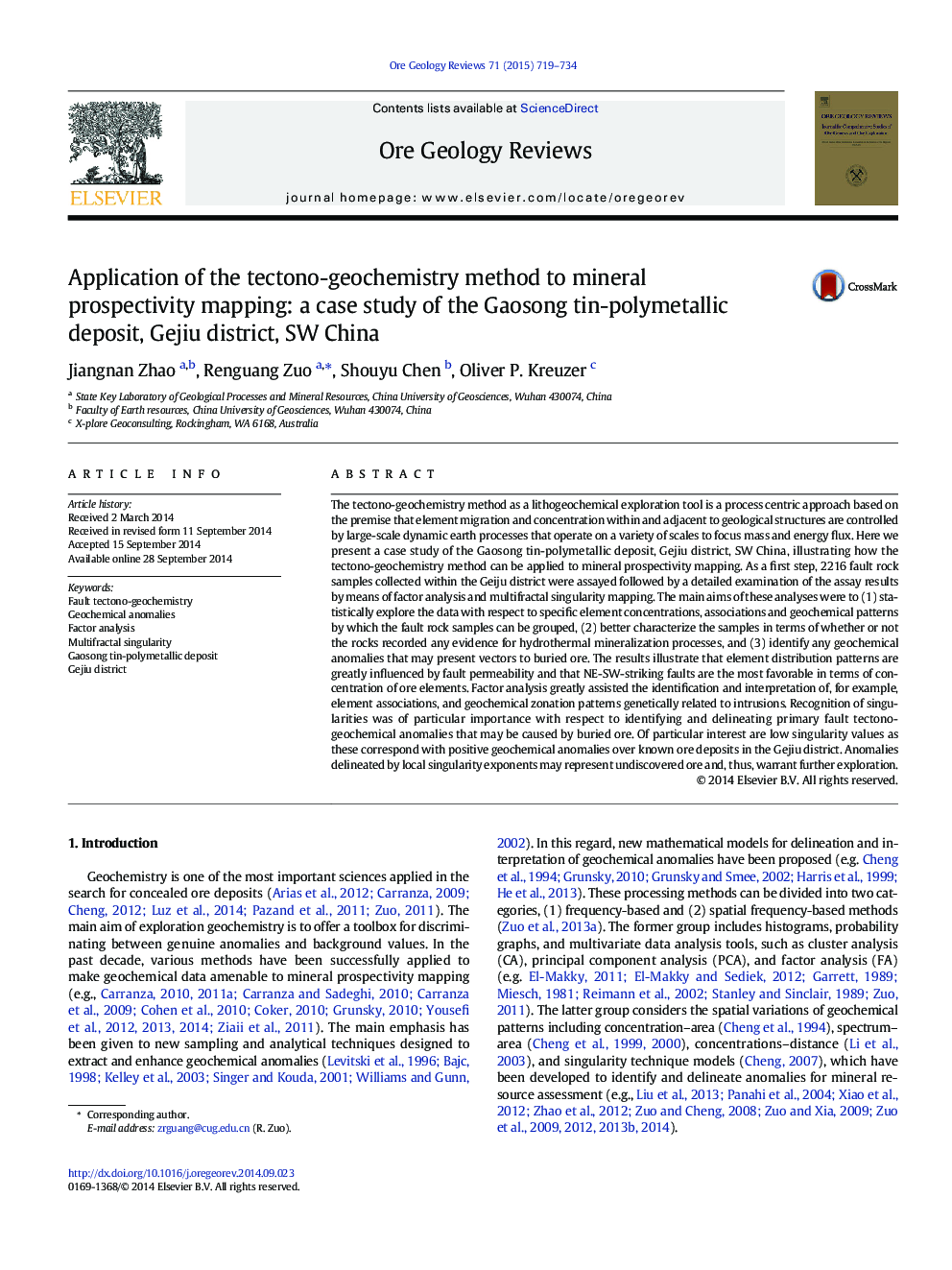| کد مقاله | کد نشریه | سال انتشار | مقاله انگلیسی | نسخه تمام متن |
|---|---|---|---|---|
| 4697046 | 1637233 | 2015 | 16 صفحه PDF | دانلود رایگان |

• We applied the tectono-geochemistry method to map mineral prospectivity.
• Factor analysis was applied to explore common features of ore-forming elements.
• Singularity index was used to identify primary fault tectono-geochemical anomalies.
The tectono-geochemistry method as a lithogeochemical exploration tool is a process centric approach based on the premise that element migration and concentration within and adjacent to geological structures are controlled by large-scale dynamic earth processes that operate on a variety of scales to focus mass and energy flux. Here we present a case study of the Gaosong tin-polymetallic deposit, Gejiu district, SW China, illustrating how the tectono-geochemistry method can be applied to mineral prospectivity mapping. As a first step, 2216 fault rock samples collected within the Geiju district were assayed followed by a detailed examination of the assay results by means of factor analysis and multifractal singularity mapping. The main aims of these analyses were to (1) statistically explore the data with respect to specific element concentrations, associations and geochemical patterns by which the fault rock samples can be grouped, (2) better characterize the samples in terms of whether or not the rocks recorded any evidence for hydrothermal mineralization processes, and (3) identify any geochemical anomalies that may present vectors to buried ore. The results illustrate that element distribution patterns are greatly influenced by fault permeability and that NE-SW-striking faults are the most favorable in terms of concentration of ore elements. Factor analysis greatly assisted the identification and interpretation of, for example, element associations, and geochemical zonation patterns genetically related to intrusions. Recognition of singularities was of particular importance with respect to identifying and delineating primary fault tectono-geochemical anomalies that may be caused by buried ore. Of particular interest are low singularity values as these correspond with positive geochemical anomalies over known ore deposits in the Gejiu district. Anomalies delineated by local singularity exponents may represent undiscovered ore and, thus, warrant further exploration.
Journal: Ore Geology Reviews - Volume 71, December 2015, Pages 719–734